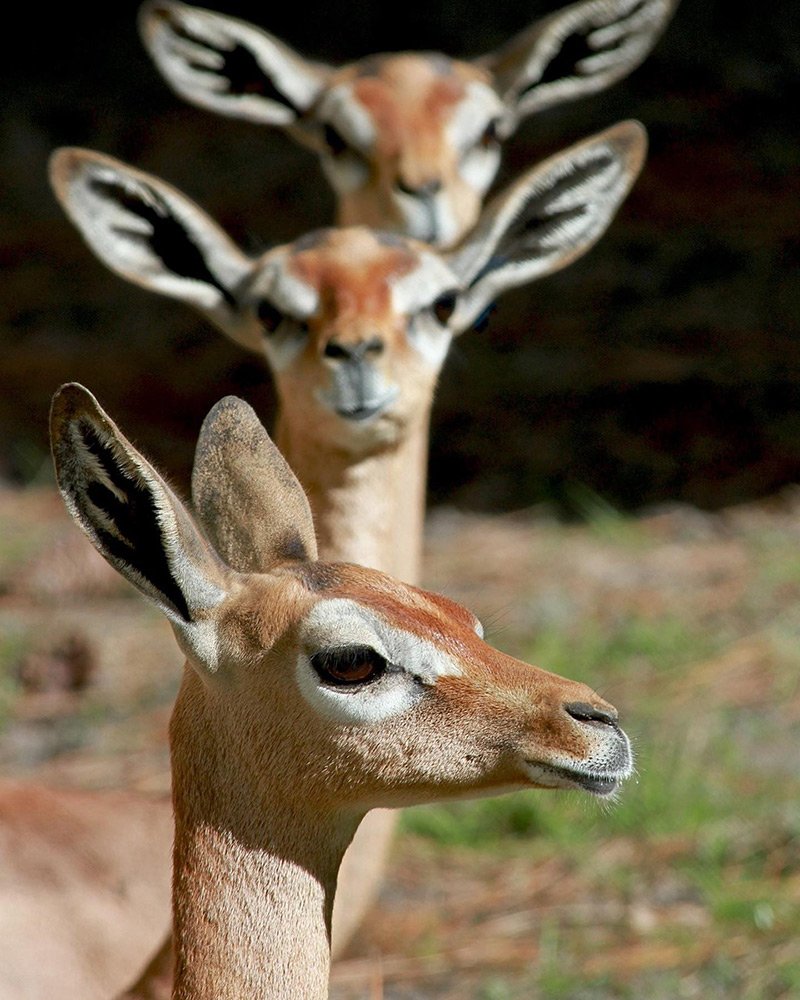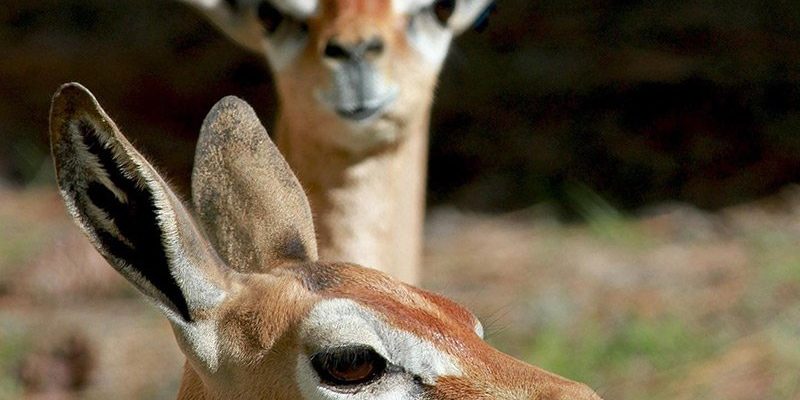
Like many species around the globe, the gerenuk is struggling to survive amid changing environments and human activities. It’s easy to forget about these remote creatures when we’re caught up in our busy lives. But understanding their plight can help us appreciate the beauty of these animals and what we can do to support them. So, grab your favorite coffee cup, settle in, and let’s dive deeper into the world of the gerenuk and the conservation efforts that surround it.
What is a Gerenuk?
The gerenuk (scientific name: *Litocranius walleri*) is a unique type of antelope native to East Africa, primarily found in countries like Kenya, Tanzania, and Somalia. One striking feature of the gerenuk is its elongated neck, which helps it reach high branches that many other herbivores can’t access. Imagine it like a natural giraffe, but on a smaller scale.
These animals typically stand about 75 to 100 centimeters tall at the shoulder and weigh between 25 to 50 kilograms. They have a slender body, long legs, and large ears, which contribute to their graceful appearance. Their coat is usually a reddish-brown color, with a white belly and distinctive markings on the face and legs. This unique look makes them easily recognizable among the diverse wildlife in their habitat.
Gerenuks are herbivorous, primarily feeding on leaves, flowers, and fruits. Their diet is quite specialized, allowing them to thrive in dry, arid environments where water is scarce. They have adapted to a lifestyle that relies on foraging during the cooler times of day, which helps them conserve energy and stay cool under the harsh sun.
Why Are Gerenuks Endangered?
You might be wondering what’s putting the gerenuk at risk. The truth is, their numbers are dwindling due to several factors. First, habitat loss is a huge part of the problem. As humans expand into their territories for farming and urban development, the landscapes where gerenuks roam are vanishing. It’s like watching your favorite park being turned into a shopping mall—heartbreaking, right?
Second, poaching is another significant threat. While they’re not hunted as widely as other species, they can fall victim to poachers who target animals for meat and trophies. This illegal activity adds more strain to their already vulnerable populations.
Finally, climate change plays a role in their decline. Changing weather patterns can affect the availability of food and water sources, making it even more challenging for gerenuks to survive. Just like how it feels harder to enjoy a picnic when it starts to rain, these animals face real obstacles in their quest to find sustenance.
Current Conservation Status
The International Union for Conservation of Nature (IUCN) lists the gerenuk as Near Threatened. This classification means that they are at risk of becoming endangered if the current trends continue. While there are no precise numbers, it’s estimated that there are between 50,000 and 70,000 gerenuks left in the wild. How can we, as global citizens, ensure that these numbers don’t continue to decline?
Various conservation efforts are underway to help protect the gerenuk and its habitat. Organizations are focused on preserving critical wildlife areas and promoting sustainable land use to minimize habitat destruction. And here’s a bright spot: many local communities are becoming involved in conservation efforts, realizing that protecting wildlife can also benefit their livelihoods.
Conservation Efforts and Success Stories
So, what’s being done to help the gerenuk? Across East Africa, several conservation programs are focusing on habitat protection and community education. These initiatives aim to create awareness about the importance of preserving wildlife and restoring natural environments.
One successful example is the African Wildlife Foundation, which works closely with local communities. They’ve established programs that encourage eco-friendly farming practices and involve villagers in conservation efforts. Imagine farmers planting crops in a way that supports both their livelihoods and the local wildlife—pretty inspiring, right?
Another promising approach is engaging in anti-poaching initiatives. Many organizations are training local rangers to patrol and monitor wildlife areas. With their help, the chances of poaching decrease significantly, allowing the gerenuk population a better chance of recovery. It’s like having a dedicated team of protectors ensuring these lovely creatures can thrive.
How You Can Help Gerenuks
You might be wondering, “What can I do to help?” While some challenges seem overwhelming, there are actionable ways to make a difference. Here are a few ideas:
- Support wildlife conservation organizations: Consider donating to or volunteering with groups that work on the ground to protect gerenuks and their habitats.
- Spread the word: Educating friends and family about the struggles faced by animals like the gerenuk can help build awareness and support for conservation efforts.
- Choose sustainable products: Making eco-friendly choices in your daily life reduces pressure on natural habitats and helps protect the environment.
Remember, every little bit counts! Just like a small pebble can create ripples in a pond, your efforts can contribute to a larger movement toward animal conservation.
The Importance of Biodiversity
The plight of the gerenuk is just one thread in the larger tapestry of biodiversity on our planet. Each species plays a unique role in its ecosystem, and losing any part of that web can have cascading effects. Biodiversity helps maintain the balance of our ecosystems, contributes to food security, and even supports human health.
When we prioritize the protection of animals like the gerenuk, we also help preserve the overall health of our environment. It’s a reminder that our well-being is interconnected with the well-being of wildlife. As we work to conserve these unique animals, we’re also ensuring a brighter, healthier future for ourselves and generations to come.
Is the gerenuk endangered? Yes, its status is concerning, but understanding its challenges opens the door to meaningful conservation efforts. By staying informed and taking action, we can contribute to the protection of this beautiful species and its habitat. So next time you spot a picture of a gerenuk, let it remind you of the importance of preserving our natural world. Together, we can be champions for wildlife, ensuring that these graceful creatures continue to thrive for years to come.

